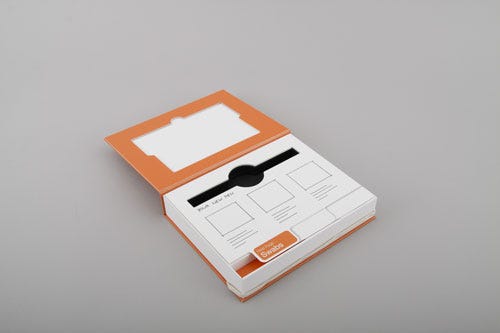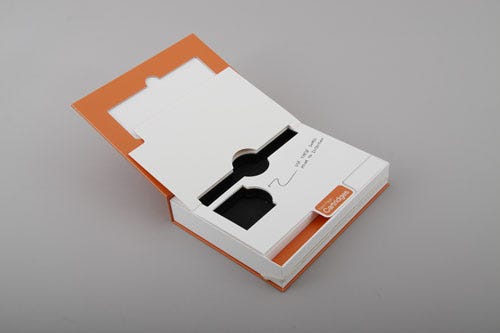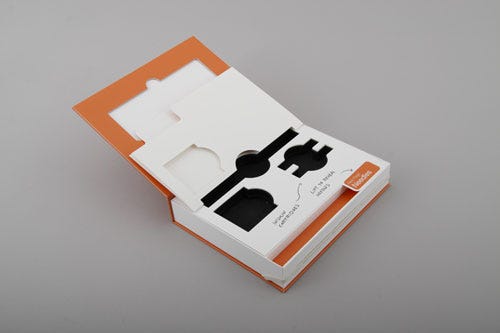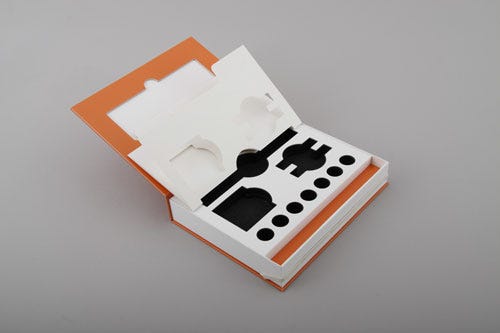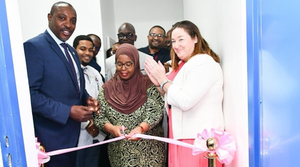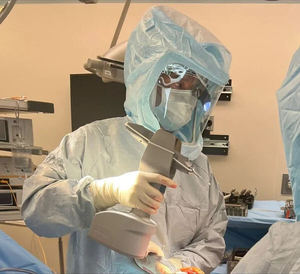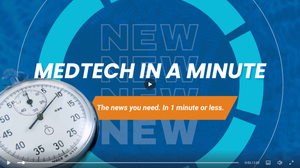Medical device packaging designed with poka-yoke principles in mind can improve usability.
April 21, 2014
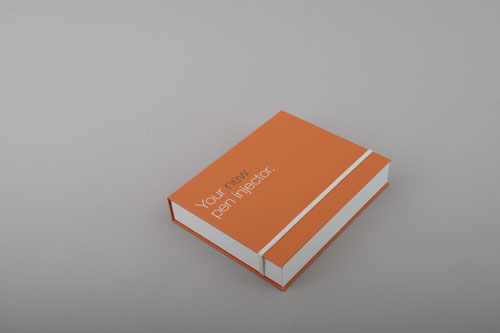
By Oscar Daws and David Robinson
In today’s crowded consumer products market, product packaging is an important tool that companies use to connect with customers. Besides protecting contents and informing users about a product, packaging is used to do everything from convey a brand’s values to create an immersive user experience. Through links to apps and websites, innovative use of materials and manufacturing processes, and the use of high-quality images and graphical treatments, consumer product packaging helps to connect users to its contents before the box is opened.
Traditionally, however, medical packaging has assumed a narrower role, focusing on providing protection during transit and storage and communicating safety-critical information about the devices it contains. Medical device packaging designs are more conservative, and for good reason.
Medical devices are not objects of desire; they are tools designed to do an important job. Medical device designers must work within a multitude of regulatory requirements designed to ensure patient safety. They must also carefully consider both the actual and perceived value of their products. Users and patients look to medical packaging for reassurance of a product’s quality, but they can also be critical if they feel money has been wasted on “fancy window dressing.” For example, users would be extremely dubious of a syringe that arrived in a drawstring velvet bag adorned with a hand-embossed cardboard tag.
Acknowledging these very real constraints, how can we continue to evolve the role medical packaging plays in the usability and user experience of medical devices?
Use Poka-Yoke Principles to Prevent User Error
In the world of medical devices, use errors are unacceptable, so designers spend a lot of time developing devices that are both intuitive and reliable. But a medical device’s packaging can also play a direct role in improving usability and helping to prevent user errors.
One widely understood and well researched technique for reducing error is a technique called poka-yoke. Poka-yoke is a Japanese term that means “mistake-proofing” (originally “fool-proofing”) and was initially developed by Toyota engineer Shigeo Shingo to streamline the automaker’s manufacturing process.
The intention of poka-yoke is to eliminate error through prevention, correction, or illumination of problems. In any system where there is opportunity for errors that could result in an undesirable outcome, poka-yoke principles can be applied to help (and indeed force) users to carry out the task effectively and avoid feelings of anxiety and foolishness.
One universally accepted example of good poka-yoke design is the shape of a SIM card. The extremely simple but incredibly effective design of these cards, featuring one cut-off corner, makes it obvious which way the SIM card must be inserted. Even if a user gets it wrong, it’s physically impossible to insert the card incorrectly. User error has been designed out.
In stark contrast to the consumer world, where incorrect assembly of a product may at worst cause inconvenience, misuse of a medical device can have catastrophic consequences. Many device manufacturers already apply the poka-yoke principle in their device design process but struggle to address issues that arise elsewhere in users’ interactions with the product. Increasingly, companies are acknowledging that a product is not defined only by the device but rather is a unified combination of the device and its peripherals, including accompanying accessories, apps, instructions for use, and packaging—all of which work together to positively affect user experience. This begs the question: Can we, by employing techniques such as poka-yoke, use a product’s packaging to guard against user error?
Applying Poka-Yoke to Packaging
While carrying out a number of studies, we noticed that users make more mistakes if they are given all the components of a device at the same time and guided only by paper instructions than if they are led through the setup process step by step by a trained individual. Working with packaging manufacturer Burgopak, Team Consulting used poka-yoke principles to develop a packaging prototype that guides users through the product assembly and use sequence without the need for a human instructor.
Our poka-yoke packaging concept presents users with each part of the device in order, with space for clear graphical instructions on how to construct and use the device at every stage (see below). This ensures that users cannot put the wrong pieces together or miss key steps. In addition, physical mistake-proofing makes it is very difficult for users to view the steps out of sequence.
The following conceptual packaging was produced in early 2014 to explore the ideas around poka-yoke approaches. It has used an insulin pen injector as an example product and deliberately does not feature any detailed instructions of use.
The package was designed to be striking and different, yet clean and minimal. The text addresses the user personally, helping to engage them emotionally in the process. |
|
Upon opening the box the user is provided with the paper instruction leaflet (on underside of cover), device and a basic quick start guide. This allows them to familiarize themselves with the device and get an overview of the next steps without being overloaded with information. |
|
Lifting the tab reveals the next section, in which we have provided swabs and space to explain how to use them. |
|
At this stage the user is presented with the drug-containing cartridges and further instructions on how they are inserted into the pen. |
|
This is the potential final stage of the packaging where the user is able to access the individual needles. |
Opportunities and Challenges
Although there is a huge opportunity to elevate the role of medical device packaging, there are challenges involved in implementing some of these ideas—especially given the highly regulated nature of the medical device industry.
Guidelines on the use of graphics and text are very strict and can be hard to interpret, leading designers to the conclusion that anything other than a six-sided white cardboard carton is unachievable. Medical device packaging designers are often designing for platform solutions, which must accommodate different formulations, strengths, and volumes.
Designers must consider the needs of multiple stakeholders, from providers to end users, their caregivers, and their families. With the increasing pressure on healthcare budgets, designers cannot ignore the impact that real or perceived cost has on adoption of innovative devices. Buyers and end users must feel confident that their money has been spent wisely, so designers must ensure that any features that add costs also add real value.
Packaging is often a user’s first physical touch point with a product or brand, and therefore can (and should) play a pivotal role in crafting the user experience. By designing the product and all its peripherals from beginning to end, designers have the opportunity to create a truly unified and consistent experience. A lack of thought in one area can, and will, project negative feelings onto another. For example, why should someone believe a device is user friendly if they can’t even open the box?
By making use of simple techniques such as careful and deliberate use of color, clear and explanatory graphics, and hierarchical presentation of information, designers can ease a patient into a device before they’ve even picked it up.
Don’t Ignore Packaging’s Potential
By applying poka-yoke principles to packaging, it is possible to remove some of the fear and anxiety patients experience when using a medical device, as well as avoid the need for time-consuming and costly design overhauls of the products themselves. As we strive for user-focused product offerings, packaging can play a key part in creating a positive user experience.
We can’t ignore the constraints that we have to work within, but with a little creative thought, it’s possible to imagine myriad ways that packaging can deliver real and measureable reductions in user error and improvements to user experience.
Oscar Daws is a designer at Team Consulting Ltd. Reach him at [email protected].
David Robinson is a senior consultant at Team Consulting Ltd. Reach him at [email protected].
Get access to medical packaging-related webinars, white papers, and resources in the Medical Packaging Community. |
You May Also Like
